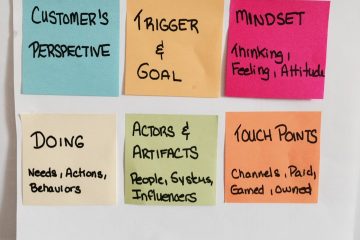User research doesn’t just build a better website, it creates a better experience with your company and your brand.
As part of a new global website project, I conducted user research on the existing site using a combination of interviews and observation. Because the users were across the world, I held the sessions remotely and used screen-sharing and recording technology. While in-person research would have been ideal, this approach was a great lower-cost, fast alternative to gather the essential user input to create a successful new design.
There was one user, Don, gregarious and likeable, whose session was particularly memorable. Don was a customer of the client and had sold their equipment through distribution for years. He loved the company’s machines but hated its website.
Don wanted to share a frustrating experience trying to find equipment on the website for a model he had sold the week before. Using remote screen-sharing, I watched his actions on-screen, his mouse circling around the web page, while he talked me through his process of searching for the product.
He knew the model number and what it looked like, but the model page was nested under several other category pages. He didn’t know what to pick because the categories and labels didn’t make sense to him. Don compared the equipment pictures, trying to decide, saying “it looks something like this,” guessing and navigating forward and back. “That’s not it. It must be one of these,” he groaned at the site’s speed, urging it to load faster as his frustration grew. “Come on, hello? Where is the darn thing? I just sold one!” He clicked on, determined, and commented that he never uses the site search because he “can never put in the right words to get it to work.”
Don took 16 steps to try and find the model, and in the end, he gave up. When I asked him about his first experience he replied, “I never found it on the website. I found it in the book [printed catalog] and called the company instead. It was just easier.”
In a real situation, a site visitor would not try so hard ─ he or she would give up and leave. This is why user research is so important. Seeing what people do on a site, versus what they say they would do, can make the difference between an intuitive design and an abandoned visit. If you want to improve the user experience on your site, you have to include research with the people you are designing it for. And that’s not you, your marketing team or your agency (including me).
Don, and other users like him, helped validate the new home page design, navigation and site features. The elusive model, which he never found in 16 steps, can now be accessed through one action on the home page. Or, it can be discovered through five different site paths, so regardless of product knowledge, nomenclature or categorization, anyone can find what they need.
During these sessions, I learned about people’s mental models, terms and expectations for the new site. The user research allowed me to create a solution that was not just usable but truly useful. I saw and felt users’ frustrations first-hand, driving our design teams to improve the experience.
It is not the user’s job to understand your company, its terms and organization to figure out how to get your website to work for them. It is your job to understand users and design a site that is made for them.


